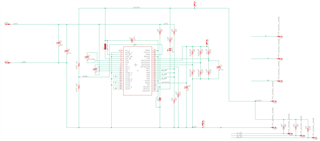Other Parts Discussed in Thread: DRV10970, MCT8316Z
I'd first like to say that in the batch of MCT8316s that I got, there's a little bit of a problem; the datasheet suggests that I can power an MCU off of it's buck converter, that MCU controls a GPIO that then controls the MCT8316 nSLEEP pin. The MCU needs to raise that pin, however, that pin controls the buck converter such that the MCU doesn't get power. I used a zener and a resistor to provide the appropriate logic-level to nSLEEP so the motor controller would run, and that satisfied my issue there, however, I'd like y'all to know that this is an issue in your chip and/or documentation you might want to rectify.
Anyways, on to my question.
I'm currently transitioning my design away from the old reliable DRV10970. With the 10970, I could use a resistor divider to provide a voltage to the PWM line, thus controlling the speed of the motor.
Can I do this with the MCT8316 or is using a PWM a hard-requirement? I'd like to avoid using a PWM, since my current design is an MCU-less, constant speed device.


